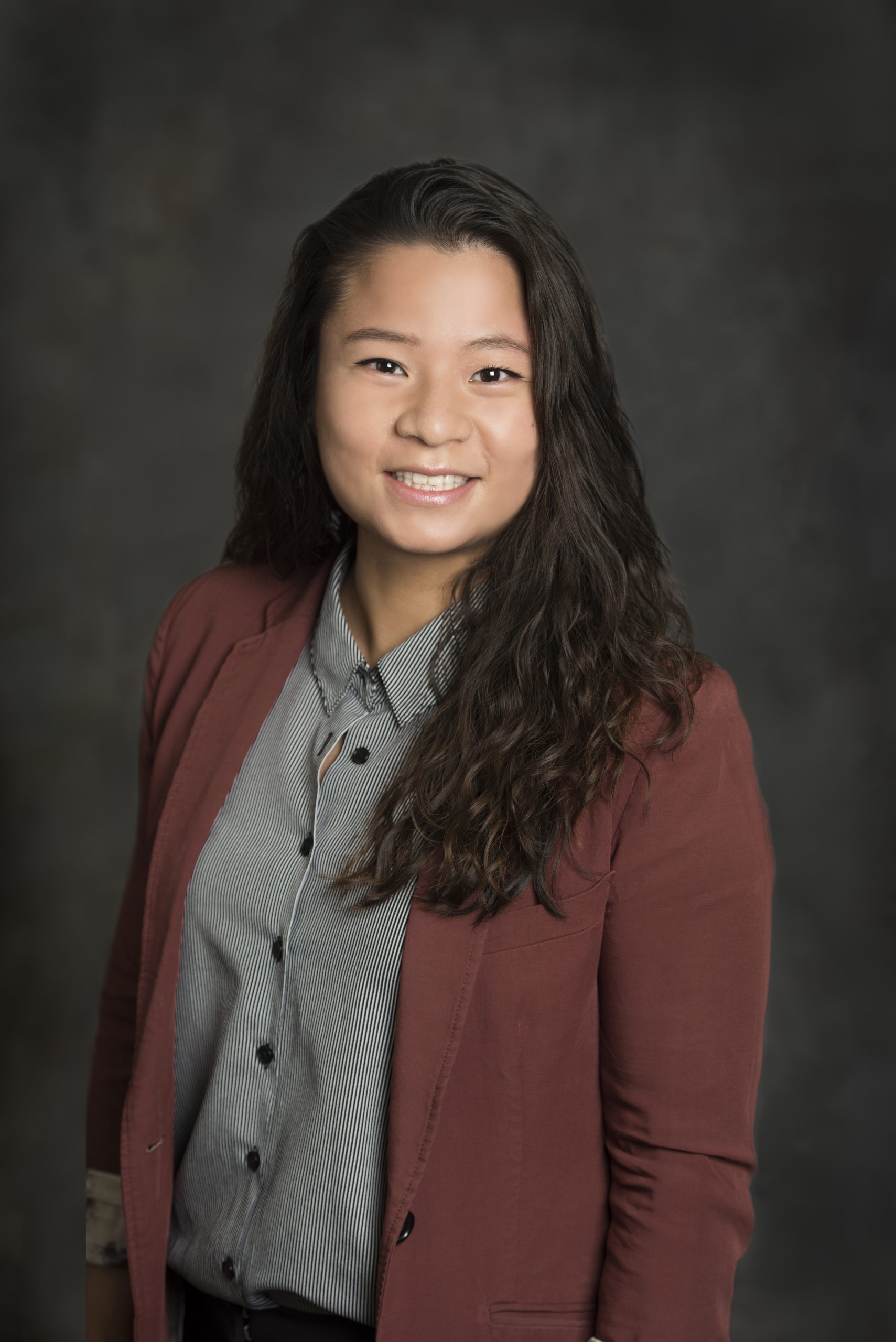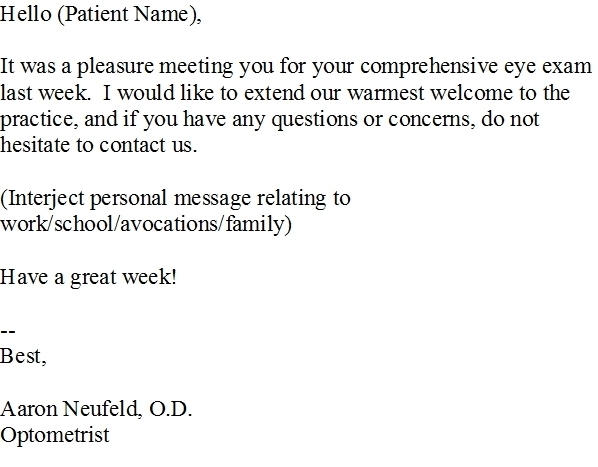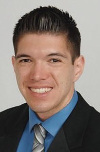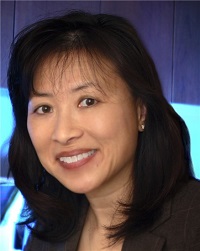
Intraprofessional collaboration is not new to health care. Although only making up a minority of referrals1, referrals within a profession address commonly faced pain points: wait-times, access to specialized care, and communication.2 There are tremendous advantages for our patients when optometrists embrace this type of referral practice.
A referral is defined by the World Health Organization as “a dynamic process in which a health professional at one level of the health system (…) seeks the help of another facility at the same or higher level to assist in the care pathway.”3
Other Profession’s Experience
In dentistry, general practitioners with advanced training (ie. in oral pain or sleep apnea) accept referrals from their colleagues while maintaining streamlined referral patterns.4
In physiotherapy, intraprofessional referrals look like a patient seeing their primary physiotherapist for running optimization, another physiotherapist for biking-related injuries, and another specialist for glute and lower leg health.5
We are no strangers to intraprofessional referral pathways in medicine. Specializations have been traditionally well delineated within medicine, allowing traditional intraprofessional referral pathways to exist.
In optometry, intraprofessional referrals are increasing, though there is room to be more supportive of each other’s areas of expertise. For some, intradisciplinary referrals might be conceptually challenging because historical referral pathways positioned optometry as primary care and ophthalmology as secondary care. However, we must recognize that access to appropriate care is improved when everyone practices to their highest ability.
Optometry Referral Opportunities
Optometric specializations include specialty contact lenses, myopia management, vision therapy, and many advanced ocular disease subspecialties. As subspecialties grow, the goal is not to multiply professional silos but rather, to improve collaboration and integration in the context of knowledge-sharing; a principal borrowed from operations management.6 As a profession, we must stop fighting this because all we accomplish is an attack on ourselves and a disservice to our patients. Intraprofessional referrals done properly lessen the volume burden on tertiary care and enhances patient care overall.
Dr. Debbie Luk, a Canadian leader in Sports Vision and Vision Therapy, describes optometry-to-optometry referrals being key in increasing awareness for optometry’s scope. Patients better understand their options and have better accessibility that can ultimately improve their quality of life.7
To adopt intraprofessional referral pathways as a referrer, one must be self-aware. Being humble to know where one’s competency starts and ends is a sign of a prudent practitioner. It is not a weakness to not know everything. In fact, it is a strength to recognize it. Learn what you do not know. Talk to those who specialize in areas that you do not and learn the referral protocol that you can adopt.
To adopt this as a referee, one must have training and one must be willing to add value to the referring community; to be trusted with referred patients. This is a commitment to communicating well with referring doctors and an openness to respecting the level of referral they prefer. For example, some may be referring to you for co-management whereas others may be referring for a complete transfer of care. And of course, the patient must be clearly communicated with regarding the referral arrangement as they have complete choice in their care.
Dr. Natalie Chai, who has a thriving referral practice for Dry Eye Disease and Myopia Management, intentionally empowers her patients and provides education to referring doctors to demonstrate that they may one day be able to offer the service themselves.8
The Power of Together
For myself, one of the most exciting things about building an optometry-led ocular disease triage model is brainstorming with referring doctors to find solutions for their patients. Every correspondence is an opportunity to collaborate and to provide more efficient access to secondary or tertiary medical management and surgical access.
However, a pearl of wisdom: it is vital that anyone receiving referrals be self-aware too. It is just as crucial to a patient’s care to accept a referral within one’s area of expertise versus denying a referral when that patient is best served elsewhere.
There is power in learning collectively and there is power in working together. Regarding hesitations because of unfamiliarity, know that you are not alone and trust that the hesitation can be overcome by having a dialogue about it. On concerns about knowledge or competency gaps, know that you are not alone in that either. You can learn anything if you really want to.
Finally, if there is a fear in getting started, a quick chat with your colleagues who are a few steps ahead of you will show you that we have all been there too. Remind yourself that you have started big things before and have come out on the other side better for it.
Optometry, let us believe in ourselves and in each other – for the sake of our patients, and for the sake of health care of which we play a crucial part.
References:
- Binczyk NM, Nazarali SA, Damji KF, Solarte C. Epidemiology of ocular emergencies in a large Canadian eye centre. Can J Ophthalmol. June 2023. doi:10.1016/j.jcjo.2023.05.008
- Seyed-Nezhad M, Ahmadi B, Akbari-Sari A. Factors affecting the successful implementation of the referral system: A scoping review. J Fam Med Prim Care. 2021;10(12):4364. doi:10.4103/jfmpc.jfmpc_514_21
- World Health Organization. High-Value Referrals – Concept Paper.; 2023.
- Wong C. Interview with Dr. Cameron Wong (Calgary, Alberta) – 07-10-2023. 2023.
- Wildeman A. Interview with Alyssa Wildeman (Calgary, Alberta) – 06-28-2023. 2023.
- Gifford R, van der Vaart T, Molleman E, van der Linden MC. Working together in emergency care? How professional boundaries influence integration efforts and operational performance. Int J Oper Prod Manag. 2022;42(13):54-78. doi:10.1108/IJOPM-10-2021-0644
- Luk D. Interview with Dr. Debbie Luk (Calgary, Alberta) – 06-28-2023. 2023.
- Chai N. Interview with Dr. Natalie Chai (Edmonton, Alberta) – 07-10-2023. 2023.

Dr. Sophia Leung, OD, FAAO, FCCSO, Dipl ABO, Dipl Ant Seg
Dr. Sophia Leung is a residency-trained and fellowship-trained optometrist with a clinical emphasis in cornea, advanced glaucoma, and anterior segment disease. She is currently practicing at a surgical referral center in Calgary, Alberta performing surgical triage, secondary and tertiary medical management, and surgical co-management alongside ophthalmology. Dr. Leung is also the current President-Elect of the Alberta Association of Optometrists.















